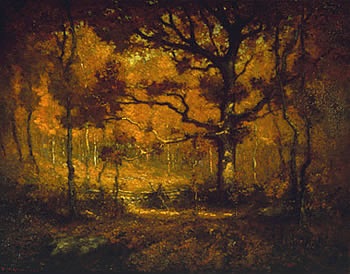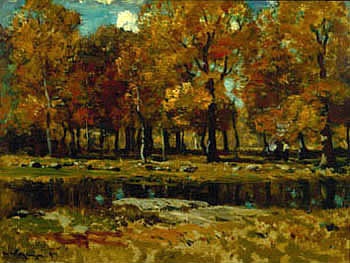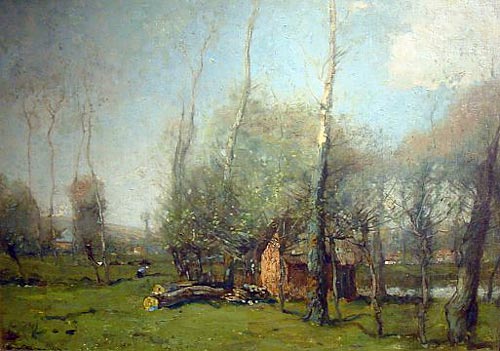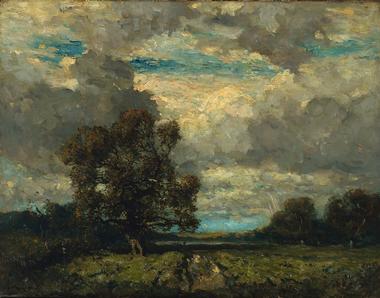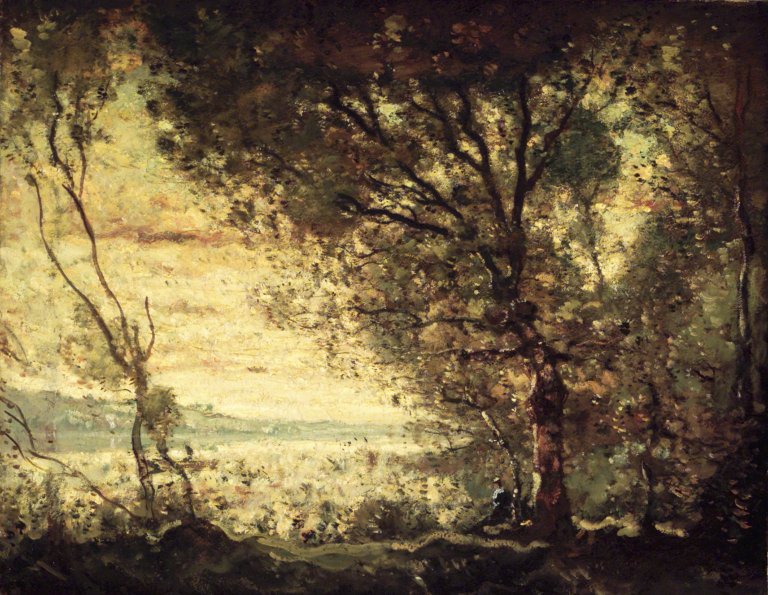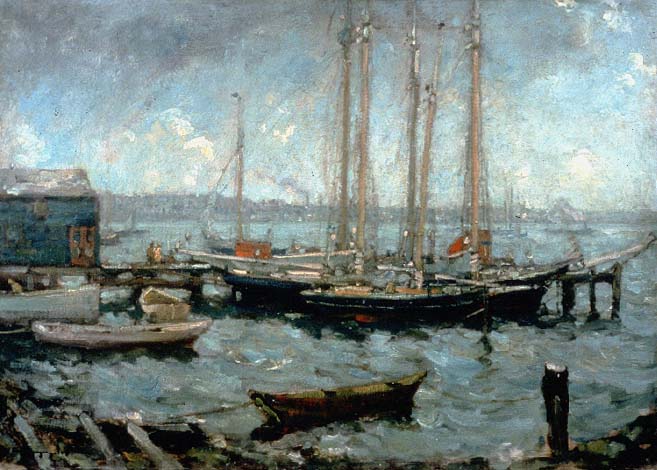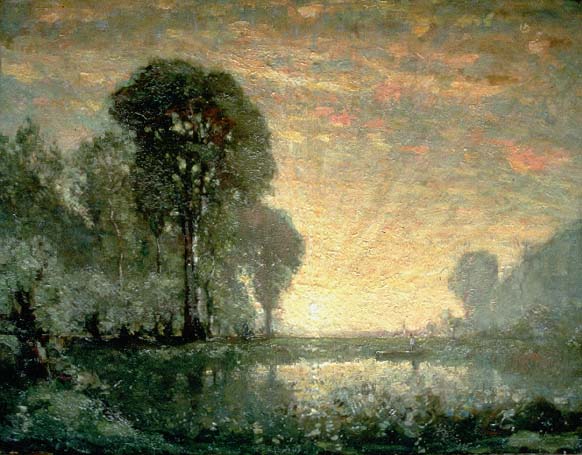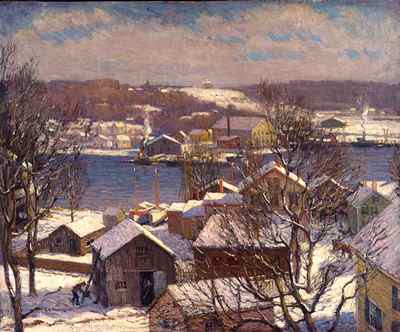<Back to Index>
- Painter Henry Ward Ranger, 1858
PAGE SPONSOR
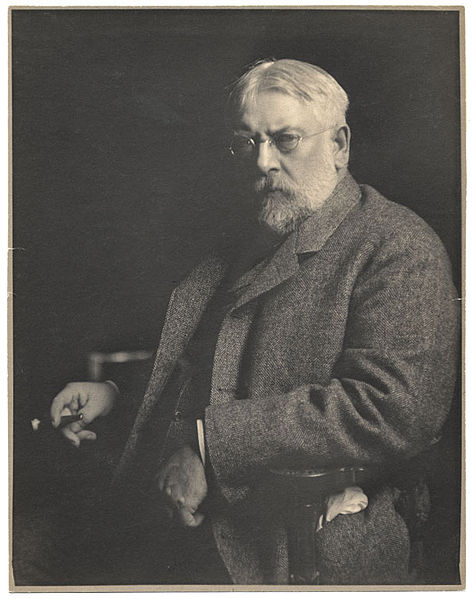
Henry Ward Ranger (January 29, 1858 – November 7, 1916 ), American artist, was born in western New York State. He became a prominent landscape and marine painter, much of his work being done in the Netherlands, and showing the influence of the modern Dutch school. He became a National Academician (1906), and a member of the American Water Color Society. He is considered a Tonalist. Among his paintings are, Top of the Hill, Corcoran Gallery of Art, Washington, D.C.; and East River Idyll, Carnegie Institute, Pittsburgh, Pennsylvania.
Henry Ward Ranger was born on January 28, 1858. His mother was Martha Marie, and his father Ward Valencourt Ranger, and he was born in the rural western part of New York State, most likely in Geneseo. He grew up in Syracuse, where his father worked as a commercial photographer, but his father also had some artistic training and later taught drawing. As a young man he studied music, excelling on the piano and organ. Ranger grew up drawing and painting and received initial encouragement from his parents. After graduating from public school, he studied at Syracuse University for two years, where he studied art formally for the first time. While he worked in his father's photographic business, he began painting watercolor landscapes, which were said to have surprisingly free brush work for someone who had not yet studied abroad. He moved to New York City in 1878 where he saw works of the Barbizon School for the first time. He supported his art studies by reviewing music and theater for several New York newspapers. In 1883, he married an Helen Jennings, a divorced actress with a son.
The newly formed Ranger family moved to Europe, visiting Paris first, but then settling in Laren, Holland, where he became active with the Hague School painters, Joseph Israels, Anton Mauve and the Maris brothers. Ranger was rapidly adopted by the Dutch painters and he quickly adopted their subjects and way of working. He sketched with the Hague School artists and learned to paint the quickly changing skies of the low counties. Because of the flatness of the land, the skies were important in Hague School paintings and the cloud filled skies with their diffused light became characteristic of Ranger's early work. The artist enjoyed living in the modest town, and his work advanced enough to be accepted by the Paris Salons by the late 1880s, and his work was accepted by leading Dutch collectors.
Ranger set up a New York studio in 1888, so he could paint landscapes there and cultivate American collectors. He had a major exhibition at Knoedler Galleries in New York in 1892, which consisted of twenty - four paintings and received a positive review. He painted watercolors that were considered free and vibrant by critics like Arthur Hoeber. Once back in the United States, Ranger became one of the leaders of the "Tonal" school of painting, and it is he who was given credit for coming up with the name "Tonalist." In 1894, he had an exhibition at the Macbeth Gallery, the first firm to specialize in the works of American artists. This exhibition included many works that had been done on a sketching trip to Canada.
Ranger was the first member of the Florence Griswold circle in the Lyme Art colony in Old Lyme, Connecticut.
